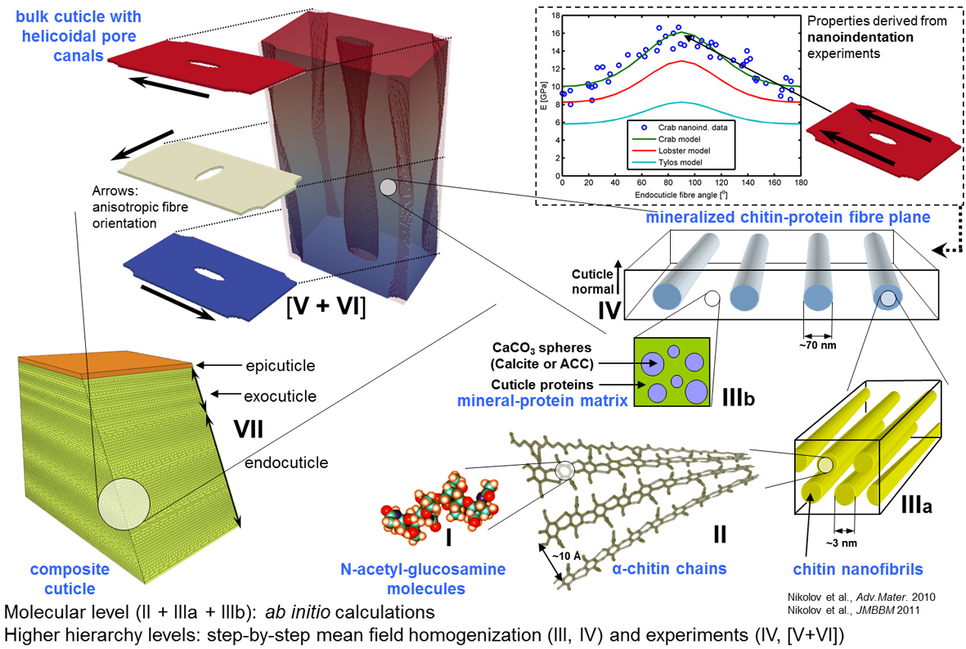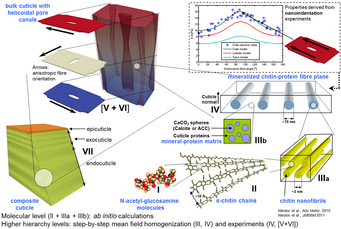Modelling of the mechanical properties and behaviour of mineralized endocuticle from different Decapoda (Crustacea)
H. Fabritius, S. Nikolov, M. Friák, P. Eisenlohr, J. Neugebauer, D. Raabe
Using experimental data, the hierarchical structure of mineralized crustacean endocuticle was modelled as individual representative volume elements (RVE’s) in a bottom-up approach to predict the elastic properties of the material. The mechanical properties of the basic constituents were determined using quantum-mechanical ab initio calculations and passed on to the higher hierarchical levels via step-by-step homogenization. The experimentally validated model enables us to quantitatively determine the influence of the individual hierarchy levels on the mechanical behavior of the material.[1] To analyse the local stress and strain fields in the material, we adapted a spectral method[2] and modelled the bulk level as a periodic, voxelized RVE of the endocuticle with pore canals. Further steps include the implementation of viscoelastic and viscoplastic behaviour into the solver developed at MPIE (DAMASK, http://damask.mpie.de). Through stepwise refinement of the model it is planned to obtain a tool for virtual prototyping for the development of biomimetic fibre-based composite materials with twisted plywood organization and a defined porosity.

References
[1] Nikolov, S., Petrov, M., Lymperakis, L., Friák, M., Sachs, C., Fabritius, H., Raabe, D. and Neugebauer, J. Revealing the design principles of high-performance biological composites using ab initio and multiscale simulations: The example of lobster cuticle. Adv. Mater. 22:519-526, 2010.
[2] R.A. Lebensohn, A.K. Kanjarla, and P. Eisenlohr. An elasto-viscoplastic formulation based on fast Fourier transforms for the prediction of micromechanical fields in polycrystalline materials. Int. J. Plasticity, 32–33:59–69, 2012.
